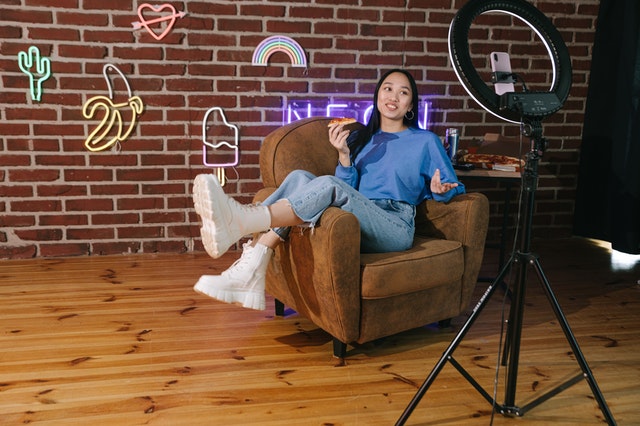How Much Does Influencer Marketing Cost

Influencer marketing can be an effective way to reach your target audience but costs can vary. Here are some things to know about influencer marketing costs.
Influencer Marketing Rate Factors
Influencers typically charge what businesses will pay. Here are some factors that go into how influencers set their rates.
- Platform - Rates usually vary based on the social media site since different platforms have different audiences and influencers have different resources.
- Reach - How many followers/subscribers an influencer has and how many they can potentially reach. More followers usually mean higher rates. Here are categories based on followers:
- Nano-influencers (up to 10,000) - Good for niche audiences, humanizing, or a small budget.
- Micro-influencers (10,000 to 100,000) - Larger targeted audience with lots of human connection.
- Macro-influencers (100,000 to 1,000,000) - Usually content creators of some kind.
- Mega-influencers (1,000,000+) - Sometimes traditional celebrities or public figures. Use if you have a huge budget and need high visibility.
- Engagement - Rates vary based on how much engagement influencers generate. More followers don’t always mean better engagement rates. Look into how much an influencer’s audience engages and interacts with their content, the more, the better.
- Industry - Find an influencer who specializes in your industry. The more influencers there are, the better the prices should be. Also, make sure the interests of an influencer’s audience are in line with your goals.
- Content - Different types of content require different amounts of time, energy, and resources from influencers. Typically, the more effort it takes to create something, the more it will cost.
- Demand - High demand means high rates. Seasonal campaigns or popular influencers typically come at a premium price.
- Usage - Any plans to repurpose content needs to be in the contract. Each use is usually treated as an individual product and some influencers will charge more for reuse.
- Exclusivity - If you want a non-compete agreement or exclusivity clause that bans them from promoting a competitor for a certain time, you’ll pay more since you’re asking them to give up potential income.
Rates Per Post
According to Web FX, these are the average rates for posts.
- Facebook: $25/1,000 followers
- Nano-influencers: $25–$250
- Micro-influencers: $250–$2,500
- Macro-influencers: $2,500–$25,000
- Mega-influencers: $25,000+
- YouTube: $20/1,000 followers, unless charging based on views (usually $50–$100/1,000 views)
- Nano-influencers: $20 - $200
- Micro-influencers: $200 - $2,000
- Macro-influencers: $2,000 - $20,000
- Mega-influencers: $20,000+
- Instagram: $10/1,000 followers
- Nano-influencers: $10 - $100
- Micro-influencers: $100 - $1,000
- Macro-influencers: $1,000–$10,000
- Mega-influencers: $10,000+
- Snapchat: $10/1,000 followers
- Nano-influencers: $10 - $100
- Micro-influencers: $100 - $1,000
- Macro-influencers: $1,000 - $10,000
- Mega-influencers: $10,000+
- Twitter: $2/1,000 followers
- Nano-influencers: $2–$20
- Micro-influencers: $20–$200
- Macro-influencers: $200–$2,000
- Mega-influencers: $2,000+
Types of Partnerships
Influencers use different platforms and formats to engage with their audience. Here are some partnerships to consider.
- Shoutouts - Paid promotion on social media. Sometimes with visuals such as video, images, or GIFs, and a call to action for more sales, more followers, more traffic to your website, etc.
- Giveaways - Giveaways are when you provide an influencer something of value that they offer to their followers through a giveaway or contest. These are short-term and usually generate increased brand awareness and leads.
- Platform Takeovers - Popular on TikTok, Instagram, and Snapchat, this is when you give an influencer access to your social media page. They can curate content and send their followers to your account so they can access the “exclusive” content.
- Affiliate Marketing - An influencer promotes your product or service and gets a commission based on sales through their platform. Influencers tend to be more sales-focused in this relationship since their pay is based on production.
- Sponsored Content - You can either create content for influencers to share or ask them to create and post content for you. Influencer-created content creation will cost more.
- Product Seeding/Gifts - This is when you send popular influencers products and hope that they will say something positive about it. This can work with nano- or micro-influencers, but influencers with larger followings are usually better.
- Brand Ambassador - Brand ambassadors are a long-term arrangement. In these partnerships, influencers have usually been using your products for some time and are already a fan. Brand ambassadors consistently share videos, posts, images, and more about you and your products over a long time. They may even become the “face” of your brand.
Want to know more about influencer marketing or help to put it to work for you? Let us know! Tags: influencer marketing, cost
------
Geoff Strauss
Jul/27/2021
|

